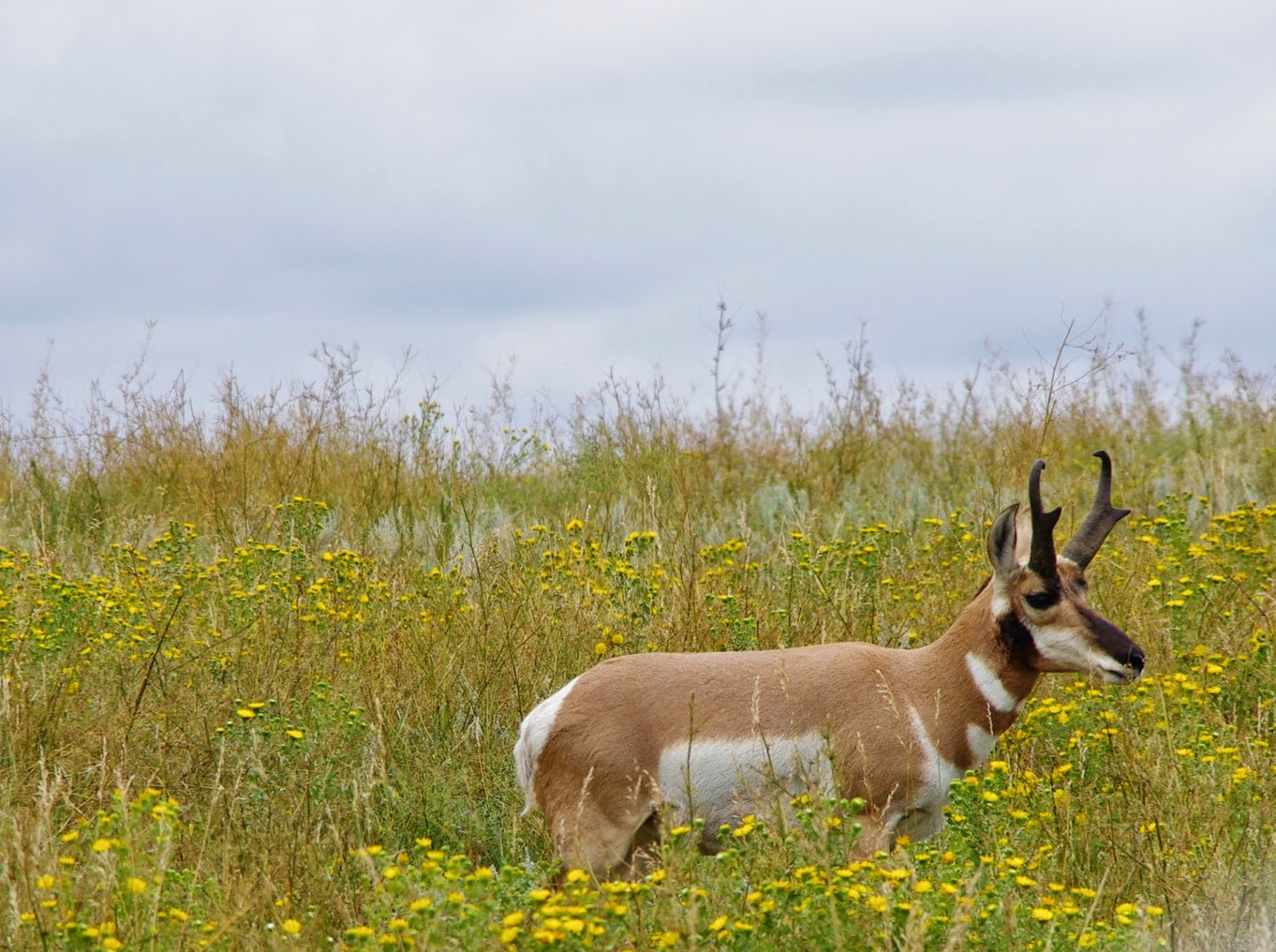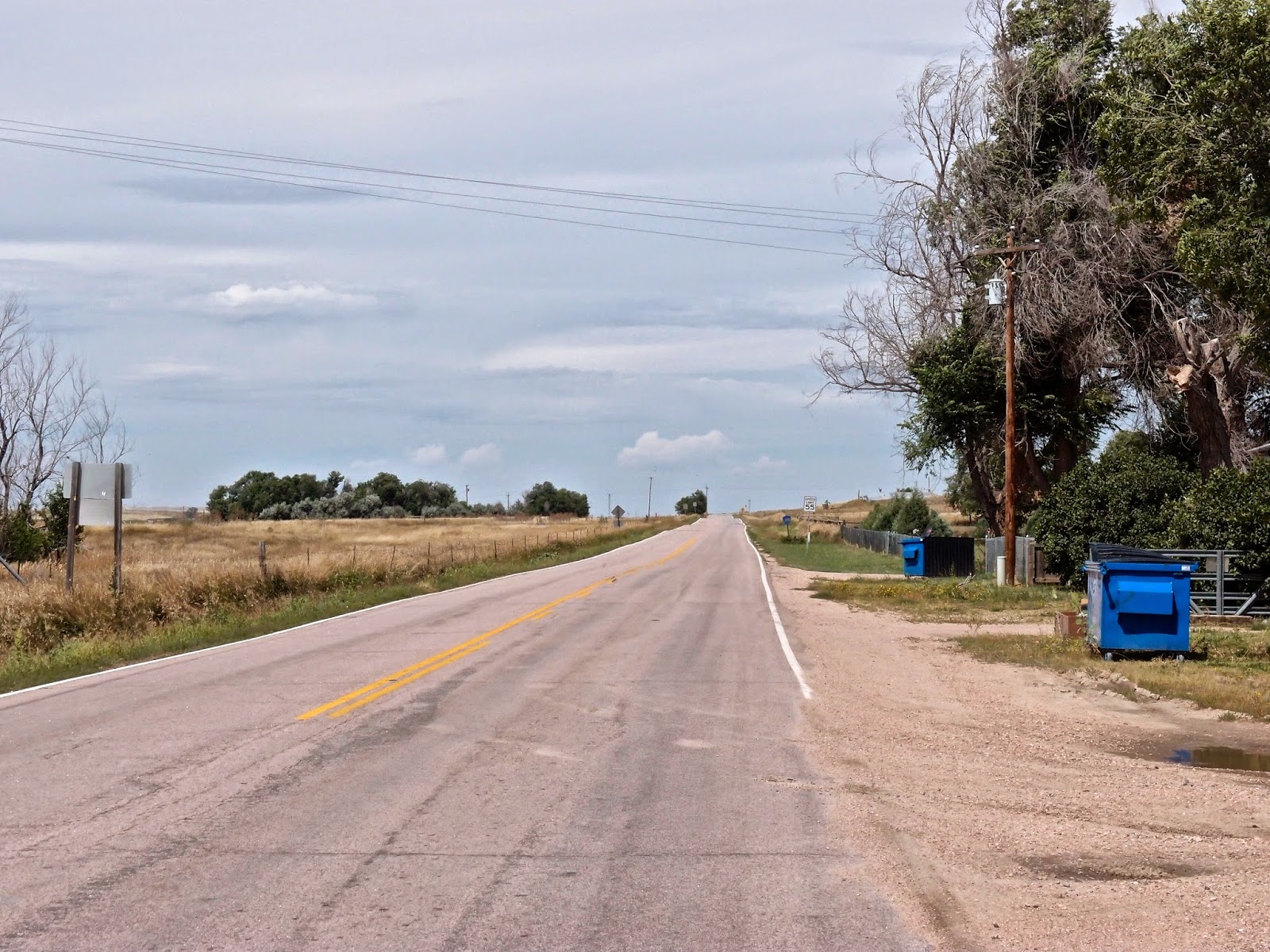 |
| Good Morning Mr President |
 |
| View from President's Way |
.jpg) |
| George Washington |
 |
| Harley Davidson on the Iron Mountain Road, Custer State Park |
 |
| French Harley Davidson Bikers |
 |
| Custer State Park, where the Buffalos roam |
 |
| and the deer and antelope play |
 |
| The Needles in Custer State Park |
 |
| Sylvan Lake on the Needles Highway, Custer State Park |
 |
| Keystone narrow-gauge near miss |
The first base on our American road trip was Mount Rushmore. I had begun to have doubts about the huge 460-mile deviation we had made to take in the Presidents. The place had always intrigued me since reading about them in a children's encyclopaedia. We were up early, first to breakfast and arrived at Mt Rushmore shortly after 8:00am, the skies had turned a hooloovoo blue and visibility was perfect. It is a State, not a National Park so we had to fork out entrance fees despite having invested in a National Park annual pass. The sheer scale of the 60-foot-high faces was mind-blowing. It was a formidable project that illustrated the sheer determination of Danish-American sculptor Gutzon Borglum, who with a team of 400 workers had carved the President's faces in the fine-grained light-coloured granite at Mount Rushmore. The work started in 1927 and was finished in 1939, two years before Borgium's death. I remember discussing with Sandy Stoddart, a Scottish sculptor, a similar project to carve an amphitheatre on a rocky Scottish coast dedicated to Ossian, the mythical Scot bard. I suspect it will remain a blithe ambition.
We walked into the amphitheatre below the Presidents, flags of all the States providing a walkway to the sculptures. There is a half-mile loop walk through the pine forest below the sculptures with well-judged descriptions of the 4 Presidents. I reckoned that there was room for at least another two heads to the right of Washington, Jefferson, Teddy Roosevelt and Lincoln. My choice would be Franklin Roosevelt and possibly Obama. if he could get his act together on foreign affairs over the next two years. And maybe there should be a smaller 'B' list gallery for the impeached figure of Richard Nixon, possibly George W. Bush but may be reserved for future scoundrels as a warning against lies and corruption.
We had a coffee before heading towards Custer State Park in the Black Hills to the south of Mount Rushmore. The State Park was the brainchild of Governor Peter Norbeck, by all accounts a thoroughly decent man who wanted to showcase the spectacular Black Hills and restore the wildlife that had been largely wiped out at the end of the 19th entry following the gold rush to places like Keystone. We had been advised by several people not to miss Custer and they were spot on. The drive up the Iron Road was steep with timber bridges and tunnels blasted through the rocks.
We were accompanied by an escort of French motorcyclists who had hired Harley-Davidsons for their road trip. They were entertaining company as they posed for photos at each of the drop-offs. The mecca for motorcycling is in South Dakota at Sturgis, and each year in August there are tens of thousands who make the pilgrimage and then cruise around the spectacular roads of the Black Hills. The motorcyclists don't seem to be obsessed with overtaking, it is not Scotland, and we felt we were in a presidential convoy rather than another car to be passed. It helped that Aileen spoke good French and that I was prepared to act as an unofficial photographer for them.
The sun of the morning was gradually obscured by clouds and we began to believe the weather forecast for thunderstorms ahead. We stopped at the state game lodge where Presidents Calvin Coolidge and Dwight D. Eisenhower had established their summer White Houses and then headed into the wildlife park where we were tipped off that a couple of hundred Bison were grazing alongside one of the dirt roads. We found them along with burros that came to be fed, pronghorns and prairie dogs. There was little traffic and when we called into a cafe at Lodge Lake we entered the 1960's with a jukebox playing Whiter Shade of Pale as we sipped coffee and ate cake at the Formica topped tables.
The final section of the drive was over the Needles Highway, a road that "could not be built" but was championed by Peter Norbreck and is probably the most spectacular road I have ever encountered. More tunnels, switchbacks and the final section through the famous granite needles that look like church spires. By the time we arrived there, the heavens had opened but we still got out and observed the scenery in awe. We drove down to Sylvain Lake and had another walk in the rain, just amazed at the rock formations even in the poor light and pouring rain. We decided to give the Crazy Horse monument, still being carved, a miss and to drive back to Keystone. The roads were awash with rain and we decided to take the longer route back to Keystone along the Old Hill City Road.
The road was fairly level but was intertwined with a narrow-gauge railway line crossing it every few hundred yards. I had not seen any notices or warnings and I assumed that the line must have closed at the end of the summer and it was 6pm anyway. My initial caution had worn off when I crossed the railway for the fifteenth time just before a steam train whistled and curved into view only 50 metres away from us. Our response was mixed, I was excited to see the steam locomotive but Aileen was worried about what if the train had been 10 seconds earlier. But that's life.
The next day we had to leave the Black Hills and we had another 450-mile journey to make. We were off by 7:45am and after the deluge of the night before the air was clean and the roads empty. We headed north on the 385 to Deadwood, a town overwhelmed by casinos and cheap hotels. There seemed to be some Poker tournament underway but we passed and joined the Interstate 90 to travel to Sundance, we were heading back into Wyoming.





















